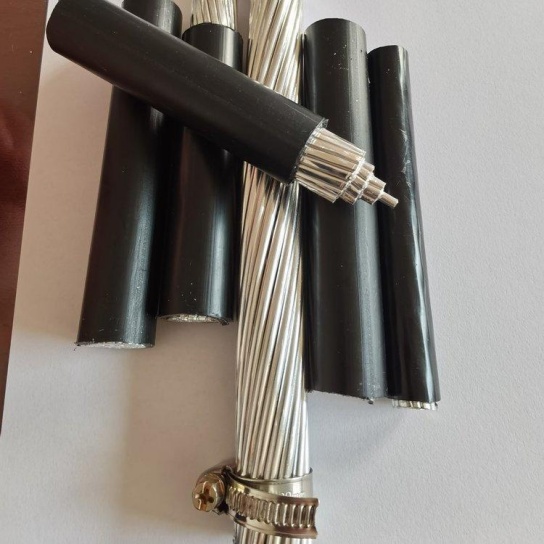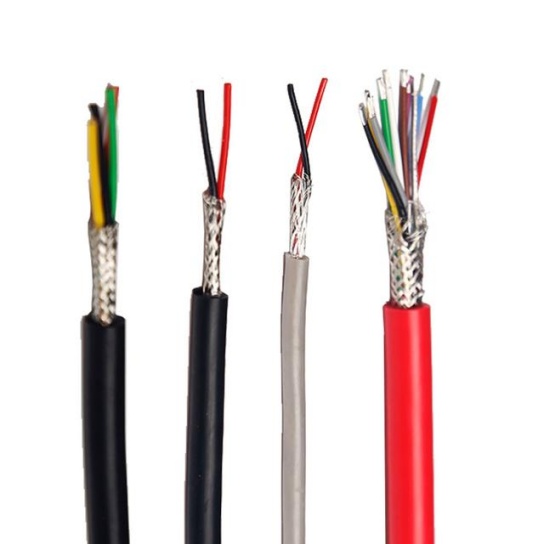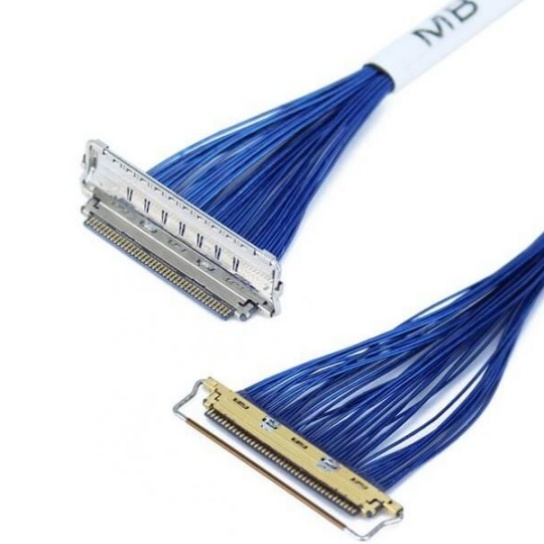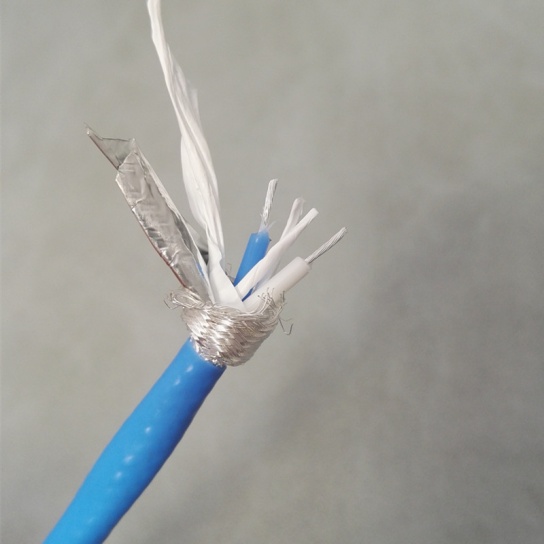Maintaining Aircraft Cable Assemblies: Best Practices
Aircraft cable assemblies are the “nerve and muscle” of an aircraft, powering critical systems from flight controls and avionics to landing gear and cabin utilities. Even minor wear or neglect in these components can lead to catastrophic failures, compromising flight safety, increasing operational costs, and causing costly downtime. For aviation maintenance teams, technicians, and fleet managers, mastering effective strategies for Maintaining Aircraft Cable Assemblies is not just a regulatory requirement—it is a cornerstone of reliable aircraft operation. This guide outlines proven best practices to ensure cable assemblies perform optimally throughout their service life, adhering to industry standards (such as FAA AC 43.13-1B, EASA Part 145, and OEM specifications) and mitigating common failure risks.
1. Implement a Structured Preventive Maintenance Schedule
Preventive care is far more effective than reactive repairs when it comes to Maintaining Aircraft Cable Assemblies. Unlike corrective maintenance (which addresses issues after they occur), a proactive schedule identifies potential problems early—before they escalate into safety hazards or equipment failures.
Key Steps for Preventive Scheduling:
- Align with OEM Recommendations: Every aircraft and cable assembly model has unique maintenance intervals specified by the original equipment manufacturer (OEM). For example, stainless steel control cables may require inspection every 50 flight hours, while copper-core avionics cables might extend to 100 flight hours. Always reference the aircraft’s Maintenance Manual (AMM) or Cable Assembly Service Bulletin to set baseline intervals.
- Account for Operational Conditions: Adjust schedules based on the aircraft’s usage environment. Aircraft operating in harsh conditions—such as coastal areas (high salt exposure), desert regions (sand and extreme heat), or frequent short-haul flights (more takeoff/landing stress)—need more frequent checks. For instance, salt air accelerates corrosion in cable strands, so coastal fleets should shorten inspection intervals by 20–30%.
- Use Digital Tracking Tools: Leverage maintenance management software (MMS) like Traxxall or Ramco to log inspection dates, findings, and follow-up actions. Digital records ensure no task is missed, enable trend analysis (e.g., identifying cables that fail more frequently), and simplify compliance audits.
By embedding preventive checks into routine operations, teams reduce the risk of unexpected cable failures by up to 40%, according to data from the International Air Transport Association (IATA).
2. Conduct Thorough Visual and Physical Inspections
Visual and physical assessments are the first line of defense in Maintaining Aircraft Cable Assemblies. These inspections require trained technicians to identify subtle signs of wear, damage, or degradation that may not be detected by automated tools alone.
A. Visual Inspection Checklist
- Strand Wear and Breaks: Examine cable strands for fraying, kinking, or broken wires. Even a single broken strand in a control cable can reduce load capacity by 10–15%; if more than 5% of strands are broken (per OEM limits), the cable must be replaced immediately.
- Corrosion: Look for discoloration (e.g., green patina on copper, rust on steel) or white powder (oxidation) on cables and terminals. Corrosion weakens metal integrity and disrupts electrical conductivity—common in areas exposed to moisture, hydraulic fluids, or de-icing chemicals.
- Insulation Damage: Check the outer insulation (e.g., Teflon, silicone, or PVC) for cracks, cuts, or melting. Damaged insulation can cause short circuits (in electrical cables) or expose strands to environmental damage. Pay special attention to cable bends and areas near moving parts (e.g., control rods), where insulation is most prone to wear.
- Connector and Terminal Condition: Inspect terminals, crimps, and connectors for looseness, corrosion, or deformation. A loose connector can cause intermittent electrical signals (leading to avionics glitches), while a corroded terminal may overheat during operation.
B. Physical Inspection Techniques
- Tension Testing: Use a calibrated tension gauge to verify cable tension matches OEM specifications. Over-tensioned cables stretch prematurely, while under-tensioned cables can slacken and snag on adjacent components. For example, flight control cables typically require tension adjustments between 25–50 lbs, depending on the aircraft model.
- Flexibility Checks: Gently bend the cable at typical operating angles to ensure it moves freely. Stiffness or resistance may indicate internal corrosion or strand bonding (caused by oil or dirt buildup).
- Electrical Continuity Testing: For electrical cable assemblies, use a multimeter or megohmmeter to test for continuity and insulation resistance. A drop in continuity (e.g., higher resistance than OEM limits) signals a damaged conductor, while low insulation resistance indicates a short circuit risk.
Inspections should be documented in detail, including photos of any anomalies, to support traceability and future maintenance decisions.
3. Follow Proper Cleaning and Lubrication Protocols
Contaminants like dirt, oil, hydraulic fluid, and salt deposits are major enemies of aircraft cable assemblies. They accelerate wear, cause corrosion, and interfere with electrical performance. Proper cleaning and lubrication are critical steps in Maintaining Aircraft Cable Assemblies, but they must be done correctly to avoid damaging components.
A. Safe Cleaning Practices
- Choose the Right Solvent: Never use harsh chemicals (e.g., acetone, gasoline) that can degrade insulation or damage cable materials. Instead, use OEM-approved solvents:
- For electrical cables: Isopropyl alcohol (99%) to remove dirt and oil without harming Teflon or silicone insulation.
- For metal control cables: Mineral spirits (low-VOC) to dissolve grease and salt, followed by a clean, lint-free cloth to wipe dry.
- Avoid Excessive Moisture: When cleaning, use a damp (not soaking) cloth or low-pressure air (30–50 psi) to blow away loose debris. Never submerge connectors or terminals in liquid, as this can cause internal corrosion.
- Dry Thoroughly: After cleaning, allow cables to air-dry completely (or use compressed air at room temperature) before reinstalling or lubricating. Residual moisture trapped between strands accelerates rust and oxidation.
B. Strategic Lubrication
- Lubricate Only When Necessary: Over-lubrication attracts dirt and debris, creating a grinding paste that wears down strands. Refer to the AMM to determine lubrication frequency—typically every 100–200 flight hours for moving cables (e.g., control cables) and annually for stationary cables (e.g., avionics wiring).
- Select OEM-Approved Lubricants: Use lubricants designed for aviation applications, such as:
- Silicone-based greases: Ideal for high-temperature environments (e.g., engine bay cables) and non-conductive applications.
- Graphite-based lubricants: Suitable for metal-on-metal contact (e.g., cable pulleys) to reduce friction without attracting dirt.
- Apply Sparingly: Use a small brush or cloth to apply a thin, even layer of lubricant to cable strands and moving parts. Avoid getting lubricant on insulation or electrical connectors, as it can cause conductivity issues.
4. Address Wear and Damage with Correct Repair or Replacement
Even with rigorous maintenance, aircraft cable assemblies will eventually wear out. Knowing when to repair and when to replace is essential for Maintaining Aircraft Cable Assemblies safely and cost-effectively.
A. Repairable vs. Non-Repairable Damage
- Repairable Issues:
- Minor insulation damage (e.g., small cracks): Use OEM-approved heat-shrink tubing (matched to cable size and temperature rating) to seal the area.
- Loose connectors: Re-crimp terminals using calibrated tools (e.g., hex crimpers) to ensure a secure, low-resistance connection.
- Light surface corrosion: Remove rust with a fine wire brush (avoid scratching strands) and apply a corrosion-inhibiting compound (e.g., Boeshield T-9).
- Non-Repairable Issues (Replace Immediately):
- More than 5% broken strands (per OEM limits).
- Severe corrosion (e.g., pitting, strand bonding).
- Insulation that is melted, charred, or completely cracked (exposing conductors).
- Cable stretch beyond OEM tolerances (e.g., more than 1% elongation for control cables).
B. Replacement Best Practices
- Use OEM-Certified Parts: Never substitute generic cables for OEM-approved assemblies. Aviation-grade cables are manufactured to strict standards (e.g., MIL-DTL-83420 for electrical cables, MIL-DTL-17 for control cables) and tested for strength, temperature resistance, and conductivity.
- Follow Correct Routing and Installation: Reinstall the new cable using the same routing path as the old one to avoid interference with moving parts or hot surfaces. Use cable clamps (spaced per AMM guidelines) to secure the cable and prevent vibration-induced wear.
- Torque Terminals to Specifications: Use a torque wrench to tighten connectors and terminals to OEM torque values (e.g., 8–12 in-lbs for electrical terminals). Over-tightening can damage threads, while under-tightening causes loose connections.
5. Control Environmental Exposure
Aircraft cable assemblies operate in extreme environments—from -65°F (-54°C) at high altitudes to 250°F (121°C) in engine bays—plus exposure to vibration, moisture, and chemicals. Mitigating environmental stress is a key part of Maintaining Aircraft Cable Assemblies.
Key Environmental Mitigation Strategies:
- Vibration Dampening: Install anti-vibration clamps (e.g., rubber or neoprene) on cables near engines or landing gear. Vibration causes strands to rub against each other, leading to premature wear and fatigue.
- Temperature Protection: Use heat shields or ceramic sleeves for cables near hot components (e.g., exhaust manifolds) to prevent insulation melting. For cold environments, ensure cables are rated for low temperatures (e.g., Teflon insulation withstands down to -65°F) to avoid brittleness.
- Moisture and Chemical Resistance: Apply a water-repellent coating (e.g., conformal coating for electrical cables) to protect against rain, humidity, and de-icing fluids. In hydraulic systems, route cables away from fluid lines to avoid leaks that can degrade insulation.
- Storage Conditions: When storing spare cable assemblies, keep them in a climate-controlled area (15–25°C, 40–60% humidity) in sealed, labeled containers. Avoid storing cables near chemicals, direct sunlight, or sharp objects that can damage insulation.
6. Invest in Technician Training and Certification
Even the best protocols fail without properly trained personnel. Maintaining Aircraft Cable Assemblies requires technicians to understand cable materials, OEM standards, and specialized tools—skills that must be regularly updated.
Training Requirements:
- Initial Certification: Technicians should hold relevant certifications, such as FAA Airframe and Powerplant (A&P) certification or EASA Part-66 license, with specific training on cable assembly maintenance.
- OEM-Specific Training: Many OEMs (e.g., Boeing, Airbus, Collins Aerospace) offer specialized courses on their cable assemblies, covering inspection techniques, repair procedures, and tool usage.
- Refresher Training: Conduct annual refresher courses to update technicians on new technologies (e.g., fiber-optic cable maintenance) or revised regulations (e.g., FAA’s latest corrosion prevention guidelines).
- Hands-On Practice: Use training simulators or retired aircraft components to let technicians practice inspections, repairs, and tension testing in a low-risk environment.
Well-trained technicians are 30% more likely to detect early-stage cable damage, according to a study by the Aviation Maintenance Technician Society (AMTS).
Why FRS Is Your Trusted Partner for Maintaining Aircraft Cable Assemblies
At FRS, we understand that Maintaining Aircraft Cable Assemblies starts with high-quality, durable components—paired with support that empowers your maintenance team to succeed. As a leading factory specializing in aviation cable assemblies, FRS designs and manufactures products that align with the best practices outlined in this guide, ensuring your aircraft benefits from:
- OEM-Compliant Quality: Every FRS cable assembly meets or exceeds MIL-SPEC, FAA, and EASA standards, using aircraft-grade materials (e.g., corrosion-resistant stainless steel, high-temperature Teflon insulation) that withstand harsh environments. Our rigorous testing—including tension, conductivity, and temperature cycling—ensures each assembly performs reliably, reducing the need for frequent repairs.
- Tailored Maintenance Support: FRS provides detailed maintenance guides (customized to your aircraft model) that complement your existing protocols, including inspection checklists, lubrication schedules, and repair procedures. Our technical team is available 24/7 to answer questions about cable care, helping you resolve issues quickly and avoid downtime.
- Training Resources: We offer on-site and online training for your technicians, covering FRS-specific assembly features, best practices for inspection, and proper tool usage. This training ensures your team has the skills to maintain FRS cables effectively, maximizing their service life.
- Cost-Effective Solutions: By combining durable components with proactive support, FRS helps you lower long-term maintenance costs—reducing replacement frequency, minimizing downtime, and ensuring compliance with regulatory requirements.
When you choose FRS, you’re not just buying cable assemblies—you’re partnering with a team dedicated to your aircraft’s safety and reliability. For Maintaining Aircraft Cable Assemblies that meet the highest standards, trust FRS to deliver quality, support, and peace of mind.






